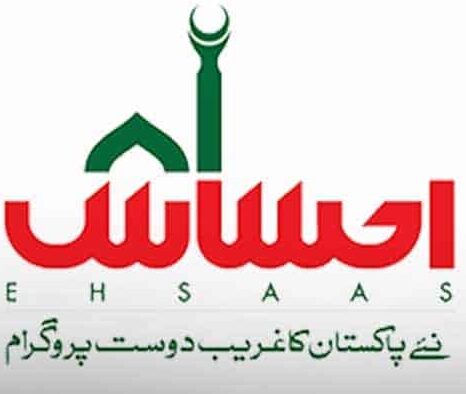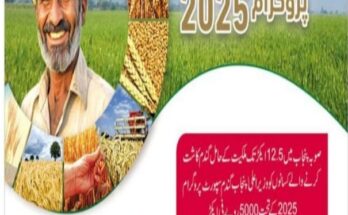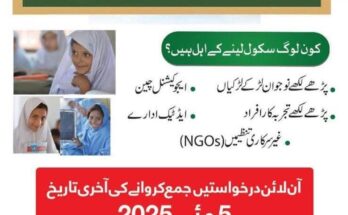Introduction
The Ehsaas Rashan Program is a flagship social welfare initiative by the Government of Pakistan, aimed at alleviating food insecurity and supporting low-income families amidst rising inflation. Launched under the broader Ehsaas framework in 2019, the program seeks to provide subsidies and direct assistance for essential food items, targeting the most vulnerable segments of society. With Pakistan grappling with economic challenges, including inflation rates soaring to unprecedented levels, the program has emerged as a critical safety net for millions of households. This article explores the origins, objectives, implementation mechanisms, impact, challenges, and future prospects of the Ehsaas Rashan Program, drawing on available data and critical analysis to provide a holistic view.
Origins and Objectives
The Ehsaas Rashan Program was initiated by the Pakistan Tehreek-e-Insaf (PTI) government under former Prime Minister Imran Khan, with its formal launch in November 2021. It is part of the larger Ehsaas Programme, which encompasses various social protection measures designed to promote a welfare state, as outlined in Article 38(D) of Pakistan’s Constitution. This article mandates the state to ensure the social and economic well-being of citizens by providing fundamental rights such as food, clothing, housing, education, and medical relief.
The primary objective of the Ehsaas Rashan Program is to mitigate the impact of inflation on low-income households by offering subsidies on essential food items like flour, sugar, ghee, cooking oil, and pulses. Initially, the program provided a 30% discount on these items, which was later increased to 40% in Punjab, alongside cash stipends of Rs. 2,000 to eligible families. The program targets families earning less than Rs. 50,000 per month, prioritizing vulnerable groups such as widows, orphans, people with disabilities, and those without stable income sources. Additionally, it aims to foster financial inclusion by encouraging digital transactions and supporting small-scale shopkeepers through subsidies and incentives.
Implementation Mechanisms
The Ehsaas Rashan Program operates through a multi-faceted implementation strategy, leveraging digital technology, public-private partnerships, and grassroots outreach to ensure accessibility and transparency. Below are the key mechanisms:
1. Registration and Eligibility
Eligibility for the program is determined through a combination of criteria, including household income, family size, and socio-economic vulnerabilities. Applicants must have a valid Computerized National Identity Card (CNIC) and a registered mobile number. Registration can be completed via multiple channels:
- SMS Verification: Individuals send their CNIC number to the designated code 8123 to check eligibility and initiate registration. A confirmation message informs them of their status.
- Web Portal: The Punjab Ehsaas Web Portal (ehsaas.punjab.gov.pk) allows online registration by entering CNIC details and other personal information.
- E-Khidmat Markaz: Physical registration centers, such as E-Khidmat Markaz, facilitate applications for those without internet access, operating Monday to Saturday with no service fee.
- Negahban Program Integration: In 2024, the program was integrated with the Negahban Program in Punjab, allowing registered beneficiaries to receive free rations, including three bags of flour, by sending an SMS to 8070.
The National Socio-Economic Registry (NSER) plays a crucial role in verifying applicant data, ensuring that only deserving families benefit.
2. Distribution Channels
Subsidized food items are distributed through registered utility stores and karyana (grocery) shops, such as Bismillah General Store, introduced by former Punjab Chief Minister Chaudhry Pervaiz Elahi. Beneficiaries receive discounts of up to 40% on items like flour (Rs. 648 per 10 kg), sugar (Rs. 89 per kg), and ghee (Rs. 375 per kg). Additionally, eligible families receive a monthly cash stipend of Rs. 2,000, which was increased from Rs. 1,000 in response to inflation.
3. Digital Ecosystem and Subsidies
The program pioneered Pakistan’s first end-to-end digital targeted subsidy system, designed to redirect untargeted subsidies from the affluent to the needy. Beneficiaries use a “Card-in-PIN” system to access discounts, promoting digital transactions. Shopkeepers receive a 5-8% commission on subsidized sales, incentivizing their participation, and are eligible for quarterly lucky draws offering prizes like motorcycles and cash.
4. Funding and Scale
The program is backed by significant financial allocations. In 2021, Rs. 120 billion was allocated for six months to support 20 million families, covering approximately 130 million people. In 2025, Prime Minister Shahbaz Sharif announced an additional Rs. 120 billion to sustain the program, with a focus on Ramadan subsidies and post-Ramadan support. Punjab, under Chief Minister Maryam Nawaz, has prioritized the program, establishing over 10,000 offices at the tehsil and district levels to facilitate registration and distribution.
Impact and Achievements
The Ehsaas Rashan Program has made significant strides in addressing food insecurity and supporting vulnerable populations. Key achievements include:
- Scale of Reach: As of 2024, the program has assisted approximately 6.7 million people in Punjab alone through the Negahban Program integration. Nationwide, it targets 20 million families, covering 130 million individuals, making it one of Pakistan’s largest social welfare initiatives.
- Economic Relief: The 40% subsidy on essential food items and Rs. 2,000 monthly stipend have provided tangible relief to low-income families struggling with inflation rates that reached 80% in some periods. The program’s focus on Ramadan subsidies, including free wheat and discounted bazaars, has been particularly impactful.
- Global Recognition: The World Bank praised the Ehsaas framework, including the Rashan Program, as a global model for poverty reduction, doubling its financial assistance after observing its success.
- Support for Vulnerable Groups: The program prioritizes women, widows, orphans, and people with disabilities, aligning with its goal of empowering marginalized communities. The Ehsaas Langar Program, an extension in Punjab, provides free meals to the poor in major cities.
- Digital Inclusion: By promoting digital transactions and bank account openings, the program has fostered financial inclusion, particularly among rural populations.
Challenges and Criticisms
Despite its successes, the Ehsaas Rashan Program faces several challenges that hinder its effectiveness:
- Registration Barriers: The reliance on digital platforms and SMS-based registration can exclude those without access to mobile phones or internet connectivity, particularly in remote areas. Physical centers like E-Khidmat Markaz address this to some extent, but coverage remains uneven.
- Eligibility Verification: The NSER-based verification process has been criticized for delays and inaccuracies, with some eligible families receiving messages indicating ineligibility or pending verification.
- Program Interruptions: Political changes have disrupted the program’s continuity. In 2022, Dr. Sania Nishtar, the program’s head, announced its closure following a change in government, affecting 20 million families. Its subsequent revival under new leadership highlights its vulnerability to political shifts.
- Inflation Outpacing Subsidies: While the stipend was increased to Rs. 2,000, and later Rs. 4,500 in some updates, inflation has eroded the real value of these benefits. Beneficiaries have noted that the subsidies are insufficient to cover rising costs.
- Shopkeeper Compliance: Some shopkeepers fail to honor the mandated discounts, and the verification process for registered stores can be cumbersome, leading to inconsistencies in implementation.
- Public Awareness: Limited awareness of registration procedures and eligibility criteria, especially in rural areas, has resulted in low participation rates among deserving families.
Critical Analysis
While the Ehsaas Rashan Program is a commendable effort, its effectiveness must be evaluated beyond official narratives. The program’s reliance on digital infrastructure assumes a level of technological literacy and access that is not universal in Pakistan, where 37% of the population lives below the poverty line and rural connectivity remains limited. The frequent changes in registration codes (e.g., 8123, 8171, 8070) and portals create confusion, undermining accessibility.
Moreover, the program’s focus on subsidies and cash transfers addresses immediate needs but does little to tackle structural issues like unemployment and market volatility. The World Bank’s endorsement, while significant, may overlook these systemic gaps, as the program’s success is measured primarily in terms of coverage rather than long-term poverty alleviation. The integration with the Negahban Program is a positive step, but its focus on free flour distribution during Ramadan suggests a reactive rather than proactive approach to food insecurity.
The program’s political underpinnings also warrant scrutiny. Its launch under PTI and subsequent interruptions under different governments reflect how social welfare initiatives can become pawns in political agendas. The reinstatement by the PML-N government in Punjab, led by Maryam Nawaz, appears driven by electoral considerations as much as altruistic intent. This politicization risks undermining the program’s sustainability and impartiality.
Future Prospects
To enhance its impact, the Ehsaas Rashan Program must address its shortcomings and adapt to evolving economic realities. Recommendations include:
- Streamlined Registration: Simplify the registration process by consolidating codes and enhancing offline access through mobile registration vans in remote areas.
- Inflation-Linked Subsidies: Index stipends and subsidies to inflation rates to ensure their real value remains meaningful.
- Capacity Building: Invest in training for shopkeepers and local officials to ensure compliance and efficient distribution.
- Long-Term Solutions: Complement subsidies with skill development and job creation programs to address the root causes of poverty.
- Public Awareness Campaigns: Launch multilingual campaigns to educate citizens about eligibility criteria and application processes, leveraging radio and community leaders in rural areas.
- Political Neutrality: Establish an independent oversight body to insulate the program from political interference, ensuring continuity across administrations.
The program’s integration with digital platforms like the Ehsaas Rashan App and web portal is a step toward modernization, but it must be accompanied by infrastructure improvements to bridge the digital divide. Expanding the Ehsaas Langar Program to provide free meals year-round, rather than only in major cities, could further enhance food security.
Conclusion
The Ehsaas Rashan Program represents a bold attempt to address food insecurity in Pakistan, offering critical support to millions of low-income families. Its achievements, including widespread coverage, global recognition, and empowerment of vulnerable groups, underscore its importance as a social safety net. However, challenges such as registration barriers, inflation pressures, and political volatility highlight the need for reforms to ensure sustainability and inclusivity.
By addressing these issues and adopting a more holistic approach to poverty alleviation, the Ehsaas Rashan Program can evolve into a transformative force for Pakistan’s most vulnerable citizens. As the country navigates economic uncertainty, the program’s success will depend on its ability to adapt, innovate, and remain true to its mission of serving the underserved.




